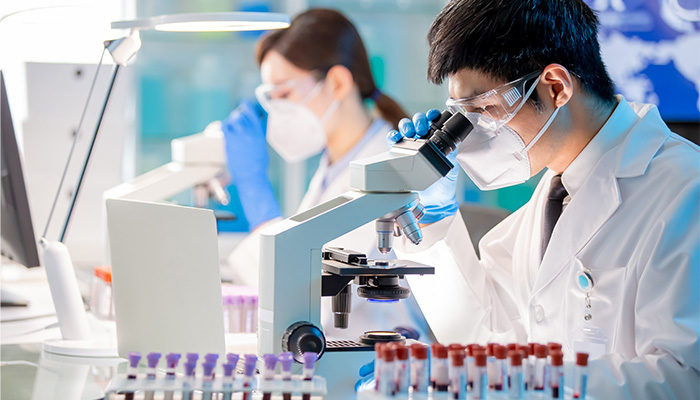What Happens to Your Sample After It’s Sent to the Laboratory?
When you give a sample to your doctor for testing, whether it’s blood, urine, or another type of specimen, you may wonder what happens to it once it’s sent to the lab. It seems like the sample just vanishes, but there’s actually a detailed and organized process behind the scenes that ensures everything is handled correctly. Here’s an overview of the journey your sample takes once it enters the medical laboratory.
1. Collection and Transport of the Sample
The first step in the process is the collection of the sample, which typically happens in a clinic, hospital, or healthcare facility. The sample is carefully labeled with important information, such as your name, date of birth, ID number, and the test being requested. This helps ensure there’s no confusion or errors during the process.
After being collected, the sample is transported to the laboratory. Depending on the nature of the test, specific conditions may be required for transportation, such as refrigeration or keeping it on ice, to preserve the sample’s integrity until it’s analyzed. For instance, certain blood tests need to be kept cold to prevent the sample from deteriorating.
2. Receipt and Logging of the Sample
Once the sample arrives at the laboratory, it is checked in by a lab technician or assistant. The first task is to log the sample into the laboratory’s system. This includes verifying the patient’s details, ensuring the test to be performed matches the request, and making sure all necessary paperwork accompanies the sample. This is a crucial step, as any issues here could delay the testing process or even lead to the sample being discarded.
Each sample is assigned a unique identification number. This ID ensures that the sample is tracked throughout the entire testing process and keeps it linked to your medical records.
3. Processing the Sample
After logging, the sample is ready for processing. The steps involved in processing will vary depending on the type of sample being tested:
- Blood Samples: For blood tests, the sample may be separated into components like plasma, serum, and red blood cells by placing it in a centrifuge, which spins the sample at high speeds. This helps separate the different parts of the blood, each of which may be tested for different markers or substances.
- Urine Samples: Urine samples are often analyzed for chemicals, cells, or bacteria. Some tests use a urine dipstick to measure parameters like glucose or protein, while others may involve a microscopic examination to check for abnormalities.
- Tissue Samples: If you’ve had a biopsy, the tissue sample will usually undergo a fixation process to preserve the cells. The tissue is often embedded in a wax block and then sliced into very thin layers for detailed examination under a microscope.
4. Testing and Analysis
Once processed, the sample undergoes the actual testing phase. The type of test depends on the request, and the methods used can range from automated machines to manual analysis by skilled technicians. Common tests include:
- Blood Tests: Blood is analyzed for various substances, such as glucose levels, cholesterol, or signs of infection. Some blood tests are processed through automated analyzers, while others, especially more specialized tests, require manual processing.
- Urine Tests: Urinalysis checks for abnormalities in the urine, such as protein, glucose, or bacteria. In some cases, urine samples are also cultured to identify infections.
- Genetic Testing: If the test involves genetic analysis, such as for disease markers or genetic disorders, DNA is extracted from the sample and analyzed using methods like PCR (Polymerase Chain Reaction).
- Microbiological Tests: For detecting infections, samples like throat cultures or urine cultures are used to grow bacteria or viruses in a lab setting. Once cultured, the organisms are identified and tested for sensitivity to various antibiotics.
5. Ensuring Accuracy with Quality Control
Throughout the testing process, laboratories follow strict quality control protocols to ensure the accuracy and reliability of results. These protocols include calibrating equipment, conducting regular maintenance, and ensuring that the procedures meet high standards. Many laboratories also seek accreditation from governing bodies such as CLIA, which guarantees they meet industry benchmarks.
Additionally, to avoid errors, labs often have procedures in place for cross-checking or verifying test results, especially when dealing with complex or unusual samples.
6. Interpreting the Results
Once testing is completed, the results are compiled and analyzed. Depending on the test, this step may involve additional interpretation. Some test results are straightforward, but others, such as biopsies or genetic screenings, may require a healthcare professional or pathologist to interpret them fully.
A pathologist may add notes or recommendations to the results, especially for complex cases or those involving abnormal findings. This ensures the healthcare provider has a comprehensive understanding of the results before moving forward with any treatment plans.
7. Generating and Delivering the Report
After the results are analyzed and interpreted, a report is generated. This report is typically sent electronically to your doctor or healthcare provider, but paper reports can also be requested in some cases. Many labs offer patient portals where you can directly access and view your test results.
8. Follow-Up and Action
Once your healthcare provider receives the results, they will discuss the findings with you. If the results are normal, you may simply be given reassurance and advised to follow up with routine testing. However, if abnormalities are found, your doctor will guide you on the next steps, which may involve further tests, treatment, or referrals to a specialist.
